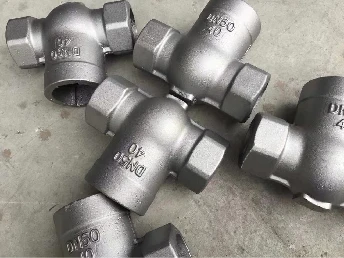Wet Sanding 3D Prints Achieving a Flawless Finish
In the world of 3D printing, achieving a perfect surface finish can often be as challenging as creating the design itself. While many have embraced the rapid prototyping capabilities of 3D printing, the aesthetics of the final product can sometimes leave much to be desired. This is where wet sanding comes into play, offering a practical solution to elevate your prints to a professional level.
What is Wet Sanding?
Wet sanding is a technique used to smooth surfaces using a combination of sandpaper and water. Unlike dry sanding, which can create dust and scratch the surface, wet sanding minimizes this issue by lubricating the sandpaper, allowing for a finer finish. This method is especially beneficial for materials like PLA, ABS, and PETG, which are commonly used in 3D printing.
The Benefits of Wet Sanding
1. Smoother Surface Finish Wet sanding can significantly reduce the visibility of layer lines and imperfections, rendering a more polished look. This is particularly useful for aesthetic models or prototypes that will be seen publicly.
2. Reduction of Dust When sanding dry, the dust created can be irritating and harmful if inhaled. Wet sanding helps mitigate this issue, leading to a cleaner workspace.
3. Less Aggressive The water used in wet sanding allows for a more controlled sanding process. This helps prevent over-sanding, which can easily occur with dry sanding if you're not careful.
4. Versatility Wet sanding can be applied to various materials beyond plastics, including resins and certain metals. This makes it a valuable technique in multi-material projects.
The Process of Wet Sanding 3D Prints
wet sanding 3d prints

1. Preparation Start by gathering your materials a selection of wet/dry sandpaper (grits ranging from 400 to 2000 work well), a spray bottle filled with water, and a soft cloth. You may also want to have a bucket of water nearby for rinsing the sandpaper during the process.
2. Choosing the Grit Begin with a coarser grit, like 400 or 600, to tackle the initial imperfections. You can gradually move to finer grits. The transition from coarse to fine grits is crucial for achieving a flawless finish.
3. Moistening the Sandpaper Before beginning, generously moisten the sandpaper with water. You can also keep a spray bottle handy to ensure it stays wet throughout the process.
4. Sanding Technique Use light pressure while sanding, moving in a circular motion or along the contours of the print. Continuously spritz water to keep the sandpaper moistened and to wash away any debris. Check the surface frequently to monitor your progress.
5. Cleaning After you’ve sanded with the desired grit, clean the print thoroughly to remove any leftover particles. A soft cloth dampened with water can help wipe it down.
6. Final Touches Once satisfied with the smoothness, you may want to apply a polish or finish to enhance the appearance further. This could be a clear coat spray or a specific resin, depending on the material used.
Tips for Successful Wet Sanding
- Patience is Key Wet sanding can be a time-consuming process, but rushing through it can lead to unsatisfactory results. Take your time and be thorough. - Safety First Even though wet sanding produces less dust, wearing a mask and goggles is still advisable to protect your eyes and lungs. - Practice Makes Perfect If you’re new to this technique, practice on test prints before moving on to your final projects. This will help you get a feel for the process and the pressure needed for effective sanding.
Conclusion
Wet sanding is a valuable technique that can dramatically enhance the appearance of your 3D prints. By following proper techniques and using the right materials, you can achieve a professional-quality finish that highlights the detail of your designs. Whether you’re printing for personal use or creating prototypes for business, wet sanding is an essential skill to add to your 3D printing toolkit. With a little practice, you’ll be able to transform your prints from rough to refined, showcasing the true potential of your 3D creations.
Post time:Dis . 18, 2024 15:31
Next:foundry sand service
